By the time he was four, the little boy began to notice that he could see less of the world. Had he not been born into a working-class African American family, or lived in the rural panhandle of Florida, the child might have had his condition diagnosed and treated. However, Jim Crow segregation and poverty prevented that.
By 1937, the seven-year-old, now living and attending classes at the Florida School for the Deaf and Blind in St. Augustine, went from low vision to a complete loss of sight, eventually having one eye surgically removed. As he understood when he was a man, the cause of this vision loss was glaucoma, a progressive but treatable disease that destroys the eye when the pressure of accumulated fluid crushes that organ’s delicate and complex structure.
But the boy’s life was not tragic or sad. Later, Ray Charles credited his mother, Aretha Williams Robinson, with his determination to live a full life as a blind person. “You lost your sight, not your mind,” he remembers her telling him. That clarity also gave him the strength to overcome an institutional education mostly intended to prepare disabled Black children for an adult life of menial, repetitive, underpaid manual labor.
Over the seven years he spent at the school, Charles learned to put brooms together, a profit-making enterprise that helped to support the school, one that white children were not required to perform. But he also learned to read braille, pages of small bumps that translated into language, but also into sheet music. Encouraged by a music teacher at the school, Charles trained as a classical pianist, playing with one hand while reading and memorizing the score with the other, and then reversing that process to memorize the part for the other hand.
In retrospect, although Charles used this technique because he was blind, it's also hard to imagine any activity that could be better for a maturing brain. But Charles’s life, often seen as a triumph over blindness, illustrates a larger point: blindness was part of who he was as a person, and may have been part of his musical genius. It also illustrates that many people who become legally blind have lived part of their lives as sighted and retain some vision. For example, Charles, who burst onto the national scene as a teenager in 1949 when he charted at #2 with “Confession Blues,” was sighted and partially sighted for a significant chunk of his life. Even when his vision loss was complete, Charles’s mind was still imprinted with colors, objects, and people, and throughout his life, he continued to gather sensory data that allowed him to experience the world visually.
In 1972, Charles sat down with television talk show host Dick Cavett, who asked whether, were it possible, the now-iconic musician would want his sight restored. In retrospect, Cavett’s approach to the subject of blindness is often as tasteless as the still-common phrase that describes futility: “the blind leading the blind.”
For example, riffing off of Charles’s abilities as a musician, as if they were improbable for a blind person, Cavett asked the artist about other things he could do. Could Charles land his private plane in an emergency? (Charles responded that he actually thought he knew enough about flying that he could.) Or could he perform an appendectomy? Although Charles had no medical training, there are, in fact, blind surgeons who do the delicate work of dissection through a refined sense of touch. Later, when Charles said that he had been watching the Cavett show for years, the host jumped on the word “watched.” Charles graciously explained that he saw everything sighted people did, because every piece of information entering his mind triggered his visual imagination.
As journalist Andrew Leland explains in The Country of the Blind: A Memoir At the End of Sight (Penguin/Random House 2023), despite the fact that sighted people “equate blindness with darkness, it's rarely experienced as a black veil draped over the world. Only around 15 percent of blind people have no light perception whatsoever.” Most of the 7,675,600 Americans counted as visually disabled in a 2016 survey, “see something,” Leland writes, “even if it isn't very useful, by sighted standards: a blurry view of their periphery, with nothing in the middle, or the inverse--the world seen through a buttonhole. For some, scenes come through in a dim haze; for others, light produces a shower of excruciatingly bright needles. Even those with no light perception at all have little use for the popular image of blindness as darkness: the brain cut off from visual stimulus can still produce washes of brilliant color and shape.”
Andrew knows these things, not just because he is a journalist and has done extensive research on the history and politics of blindness, but also because he has been losing his own vision since he was in his teens. I’ll let him tell you about that. But this is what I can tell you: during our conversation, I learned a lot about my own failure to understand the complexity of all the conditions that fit under the rubric of blindness. Not the least of those limitations was that reading a book, even an excellent book like The Country of the Blind, doesn’t make a person smart about what it means for someone else to live a life with low or no vision.
Here's what I know now: I’ve been walking around with a head full of clichés, assumptions, and stereotypes for decades. Even though I am close to a person with a progressive eye disease, reading Leland’s book, and engaging in conversation with him, only began the process of exposing what I needed to unlearn. Which may be why, as Andrew discusses in our interview, visually disabled people increasingly turn to institutions and support networks that are created, designed, and implemented by other blind people.
Photo credit: Mika Bienias-Łocheńska/Wikimedia Commons
Show notes:
The Florida School for the Deaf and the Blind that Ray Charles attended still exists, serves over 1,000 children from pre-K through high school, and is free to all students.
Want to know more about glaucoma? Check out this information page sponsored by the National Eye Institute, a division of the National Institute for Health.
Want to learn more about Ray Charles in his own words? Try his autobiography, written with David Ritz, Brother Ray: Ray Charles' Own Story (Da Capo Press, 2004.)
Here’s a National Eye Institute page that amplifies on Andrew’s description of retinitis pigmentosa.
Claire and Andrew discuss disability as a category that has emerged as a field for critical thought. If you want to think more broadly about this field, and the ways that scholars discuss it, consider Rachel Adams, Benjamin Reiss, and David Serlin, Eds., Keywords for Disability Studies (New York University Press, 2015.)
Andrew cites Liz Jackson, a disability design advocate. You can read her article “We Are the Original Lifehackers,” New York Times (May 30, 2018) here.
Andrew mentions the 18th century blind mathematician, Nicholas Saunderson, the prestigious Lucasian Professor at Cambridge University, England: you can read accounts of his life by Saunderson’s contemporaries here.
Andrew credits the beginnings of print for the blind to François Lesueur and Charles Barbier. But perhaps the most important figure in the story of accessible print is Louis Braille: there is a capsule biography, and a bibliography, on this page of the Library of Congress website.
Claire mentions a resource in New York City, the Lighthouse for the Blind. You can explore their services for low vision and blind people here.
Claire mistakenly referred to the National Federation of the Blind as the National Federation for the Blind: Andrew points out why the correct preposition signals the importance of blind people advocating for themselves. You can visit this important advocacy organization’s website here.
Andrew mentions the high unemployment rate among blind people: you can dig into those statistics here.
Andrew also described the training he received, and the self-confidence he developed, at the Colorado Center for the Blind.
You can download this podcast here or subscribe for free on Apple iTunes, Spotify, Google Podcasts, or Soundcloud. And if you liked this episode, please join us at Political Junkie!
If you enjoyed this episode, why not try:
Episode 26, Lost and Found: A conversation with historian Martha Hodes about her new memoir, “My Hijacking: A Personal History of Forgetting and Remembering."
Episode 16, The Sunlit Path of Racial Justice: A conversation with historian Matthew Pratt Guterl about his new book, "Skinfolk: A Memoir."
Episode 4, Bringing the War Home: A conversation with writer Zayd Ayres Dohrn about the Weather Underground, a generation raised in its shadow, and the search for answers in his new podcast, "Mother Country Radicals."
And here’s a bonus: through December 26, all annual subscriptions—for yourself or others—include a free copy of my book about political media, Political Junkies: From Talk Radio to Twitter, How Alternative Media Hooked Us on Politics and Broke Our Democracy (Basic Books, 2020.)


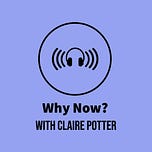



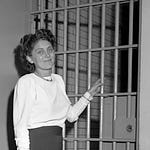
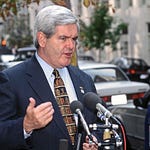
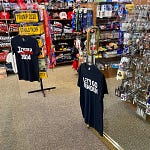

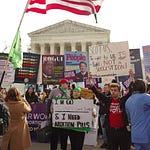
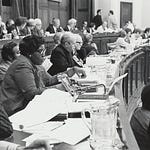

Share this post